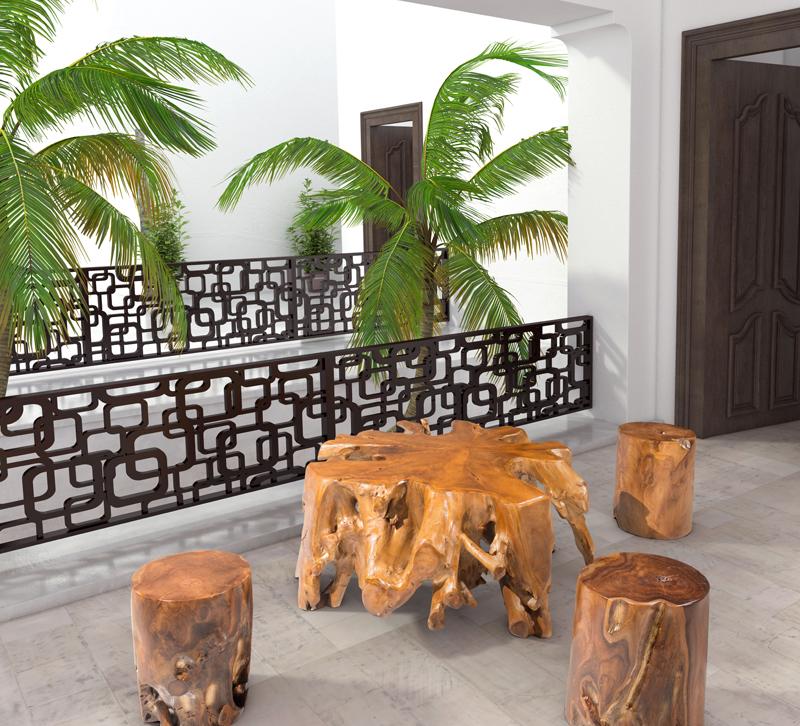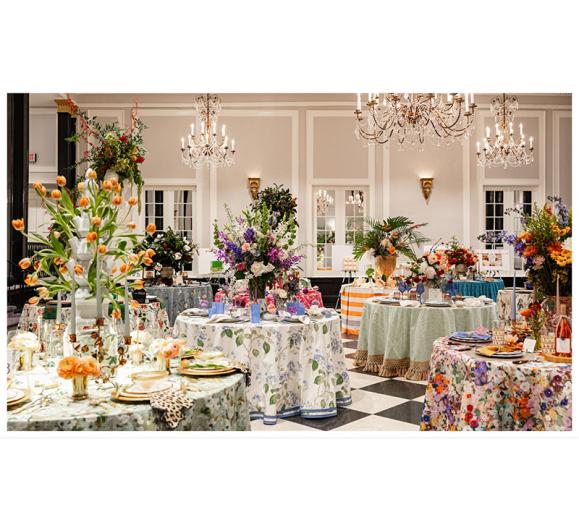Interior designers who attended the Outdoor Design Conference yesterday at the Merchandise Mart in downtown Chicago walked away from the event with great tips for making outdoor spaces shine for their clients.
For designers looking for a little outdoor inspiration, here's what attendees learned how to elevate outdoor spaces.
Design is all about blending
In his Elevating Outdoor Spaces talk, Scott Gregory, Palecek's Director of Sales, noted that nearly all aspects of design seem to be blending, from residential and commercial design (dubbed resimercial) to indoor and outdoor spaces.
His advice to designers? Start having conversations about outdoor designs earlier in the process. When talking about the kitchen, he said yesterday, bring up the outdoor kitchen and see where the client might be on that. Getting those designs in earlier will help clients budget for outdoor spaces, instead of leaving them as an afterthought.
Talking about outdoor materials and prices is also a good idea. Because Palecek produces so much teak furniture, Gregory says he gets a lot of questions about why prices for teak furniture can vary so much between high-end showrooms and big-box stores. The answer? It's all about quality, he says. Palecek uses Grade A teak, meaning it's the highest quality, in its furniture. With proper care, the furniture will last in harsh outdoor settings. Grades B and C teak, often used by big-box retailers and sold at a much lower price point, will likely show signs of wear and tear after just one or two seasons.
Indoor and outdoor spaces are no longer distinct. In many ways, they're complementing each other. For her clients, interior designer Janet Shiff, who spoke on the Gardens, Greens and Great Design panel, said outdoor spaces should carry elements of the indoors. Her best tip? Don't be afraid to move outdoor furniture indoors. As the quality and styles have improved, outdoor furniture need not be confined to outdoor spaces, a sentiment Gregory echoed. He said many of his top-selling outdoor seats are being used in indoor spaces.
Outdoor audio is huge — but outdoor TVs may be next
Ken Walker at Artisan Electronics Group, a home electronics integration company based out of the Merchandise Mart, has worked on some amazing properties in the past, and right now, more and more of his clients are asking for outdoor audio. Now that the quality of outdoor speakers has improved, he says clients have more options than ever to
During the Outdoor Design Conference, Walker gave a talk on what's happening in outdoor electronics and how designers can use them to give their clients that "wow factor" outdoors. In outdoor audio, there are a few things to note:
- More speakers equals better sound: Getting good sound outdoors is a little more difficult. Indoors, the sound waves can bounce off walls and furniture, but outdoors, there isn't much to bounce the waves and keep them in one area. Turning up the volume won't help, Walker explains, and more than likely, it'll just bother the neighbors. Instead, install more speakers to get a better sound quality.
- For even better quality, add a subwoofer: Walker recommends one subwoofer for every two to four speakers.
- Blend speakers into the foliage: Now that the quality of outdoor speakers has improved, so has the style. Now you can find speakers in different colors and finishes that will blend in with other plant life and features in the garden.
- Add outdoor wi-fi if needed: Walker says most of his clients want to be able to be online outdoors anyway, but if the speakers installed have Bluetooth capabilities, then you will want outdoor wifi.
So outdoor audio is big now, but what's on the horizon? Walker says it's outdoor TVs. It may seem counterintuitive to install a TV outdoors — after all, isn't the point of going outside to get away from technology? — but for clients with pools and large outdoor spaces, watching sports outdoors or hosting a movie night is a big plus. One tip from Walker: Do not install an indoor TV outdoors. Outdoor TVs do cost more, but the quality of the picture is better and the TV itself lasts much longer.
Use lighting strategically
Letty Allen primarily designers spaces for Baby Boomers and senior citizens, and she specializes in creating outdoor spaces that not only look great, but are also accessible. But her tips for lighting outdoor spaces apply to everyone.
Here are a few of her best lighting tips from the Senior Living and Aging in Place: Tailoring Outdoor Environments For Your Clients’ Needs panel discussion:
- Lighting should be placed wherever there are stairs: Path and wall lights may seem like enough, but as people age, their depth perception changes, making it harder for them to see where stairs end or begin. Adding kick-toe lights under stairs helps with this problem.
- Make sure the fixtures do not cause a glare: Glares can hinder a person's eyesight, causing them to bump into or trip over something. When choosing outdoor fixtures, ensure that none of them will cause a glare.
- Install motion-sensor lights: For those that have trouble walking, a motion-sensor light will click on whenever it detects movement. Homeowners need not worry about remembering to turn on or off the lights. The work will be done for them. Motion-sensor lights also offer security benefits.
With spring around the corner, it's time to start thinking about designing outdoor spaces. Designers, what are clients asking for in their outdoor spaces? Share with us in the comments!







